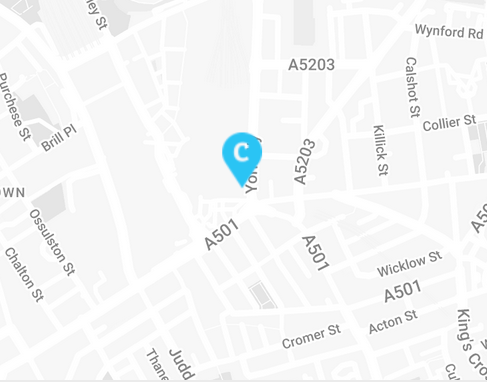The Ultimate Ecommerce SEO Checklist for 2025

In this guide, you’ll learn how to get started with optimising your ecommerce website for SEO.
We’ll give you an ecommerce SEO starter checklist that will give your site the best chances of ranking in Google.
Let’s get started:
Getting Started With Ecommerce SEO
Before we get into the nitty-gritty of ecommerce SEO, there are some important initial steps you’ll need to take to get started. Think of this stage as laying the foundations for an effective strategy.
1: Add Your Site to Google Search Console
Google Search Console is non-negotiable for Ecommerce sites. Plus, it’s free, so you won’t need to worry about paying for an account. The tool lets you track your search performance and identify indexing issues limiting your website’s ranking potential. All you need to do is go to Google Search Console, set up an account, and add your website. The tool will then guide you through the verification process, which confirms that you own the website.
2: Submit Your Sitemap
Sitemaps tell search engines about your website’s pages and ensure that they can understand which to index and rank. Most website builders generate an automatic sitemap, and you can usually find it by typing: {your domain}/sitemap.xml into the browser.
Alternatively, you can use a free sitemap tool like XML Sitemaps Generator to create a Robots.txt file. It’s also important to block the bots from crawling and reading pages you don’t want to appear in the index.
For example, many Ecommerce stores block crawlers from accessing the post-checkout page, as these won’t affect ranking.
Once you have the sitemap, follow the instructions to submit it to Google Search Console.s.
3: Set Up Your Bing Webmaster Account
Google is the world’s largest search engine, with almost 90% of the global market share – but that doesn’t mean you should ignore other search engines.
According to Backlinko, 100 million people use Bing each day. If you only focus on Google, you could miss valuable traffic. Bing Webmaster Tools is also free to use and works similarly to Google. Head to the login page, add your account, and follow the instructions.
4: Confirm Your Website’s Indexed
Your website won’t appear in search results unless it’s successfully indexed. You can check whether it’s indexed using Google Search Console and Bing Webmaster Tools.
Remember that both tools can take time to index your pages, with many taking over a week to appear in the SERPs. If you want to check which pages appear on searches, type this into Google’s search bar: site.{domain}.com.
If Google Search Console and Bing have problems indexing certain pages, they’ll notify you, and you can then fix them:
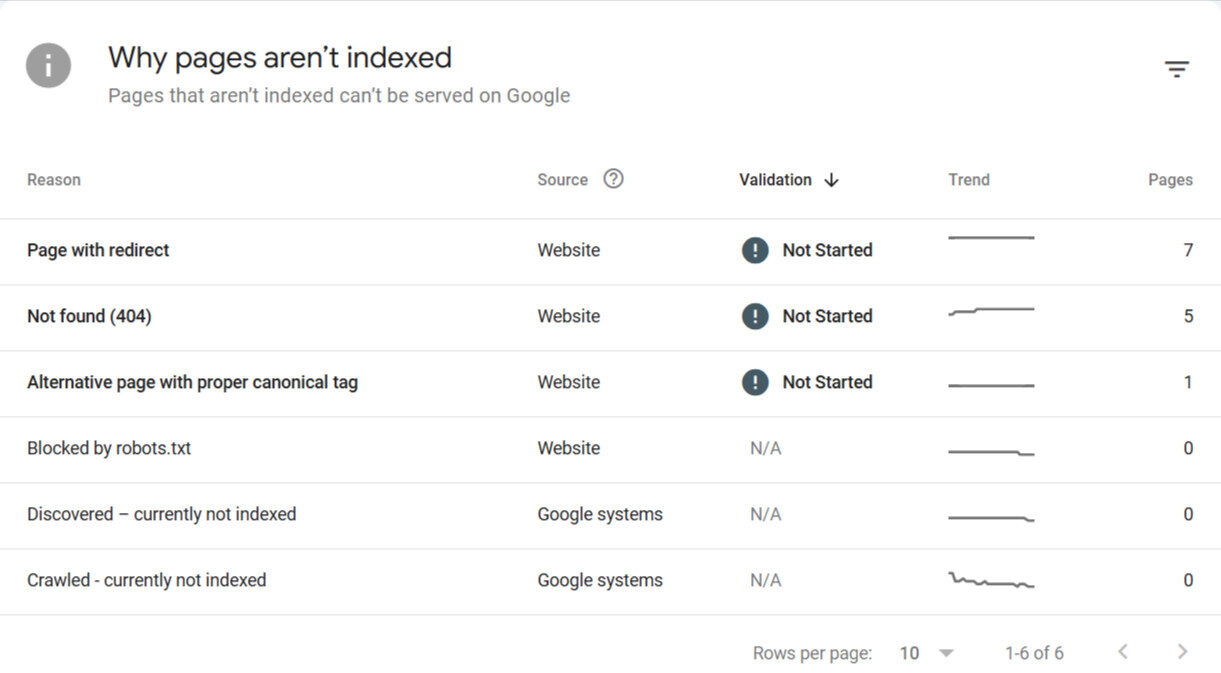
5: Set Up Your Google Analytics Account
While Google Search Console analyses your website’s search performance, Google Analytics provides vital insights as to how visitors interact with your website.
It shows you how they found your website, whether they engaged with your content, and how many visits resulted in conversions. By analysing buyer journeys, you can identify areas for improvement and ensure a seamless conversion process. You’ll need to set up a Google Analytics 4 account, then add your website as a property. The platform will ask you to add a Google ID tag to your website, which you can do through your hosting platform or Google Tag Manager.
6: Run a Complete Ecommerce Website Audit
Whether you have a new or established Ecommerce brand, it’s essential to evaluate how the site works and whether there are any issues.
Investing in a professional Ecommerce SEO audit is beneficial, as experts know which problems to look for and will offer actionable steps to overcome them.
Alternatively, you can use specialist SEO tools to run a basic audit.
7: Choose Your Ecommerce SEO Tools
SEO tools are valuable investments, as they can help you enhance your website’s searchability and ensure the best possible chance of ranking.
There are so many tools available at different price points, and it’s common for newer businesses to go on a spending spree.
However, choosing the right tools for your needs and budget ensures you stay within budget and can benefit from insights regarding your online presence.
Here are some top SEO tools for Ecommerce brands:
| Tool | Purpose | Top Features | Pricing |
| SEMRush | All-in-one SEO platform. | Website Audits, Keyword Research, Backlink Analysis, Competitor Monitoring. | ££ to £££ |
| Ahrefs | All-in-one SEO platform. | Backlink Research, Keyword Tool, Competitor Analysis, Website Audits. | ££ to £££ |
| Google Keyword Planner | Keyword research tool. | Find Relevant Keywords, Track Volume, Competition, and CPC. | Free |
| Screaming Frog | Technical SEO tool. | Run Website Audits, Check for Indexing, On-Page SEO, and Off-Page SEO Issues. | Free for websites with up to 500 URLs, then £199 a year. |
| Surfer SEO | Content optimisation tool. | Create Optimised Blog Posts and Product Descriptions. | ££ to £££ |
Ecommerce Technical SEO Checklist
Your products might be in high demand, your website could have epic design features, and your copy can be on-point – but guess what? None of that matters if your website offers a poor user experience.
It’s one of the biggest issues that Ecommerce sites face, and flawless technical SEO is vital for turning visitors into buyers. Unfortunately, it’s also one of the most complex strategies to navigate.
Here are some key technical SEO tips for your Ecommerce store.
8: Test for Core Web Vitals
There was a time when doing some keyword research and inserting them into your content was enough to achieve high rankings, but Google now has user experience as one of the most important ranking factors.
Google’s Core Web Vitals are standards that all websites should aim for:

You can optimise your Core Web Vitals by checking reports in Google Search Console and using a reputable Ecommerce website hosting platform.
You’ll need to be indexed and generating traffic for Core Web Vitals data to be insightful, as Google uses user data to understand load times.
9: Check for Mobile Responsiveness
According to InternetRetailing, 90% of consumers in the UK use their mobile devices to shop online. You lose valuable customers if your website doesn’t offer a seamless user experience across all devices.
Google uses mobile-first indexing, which means it takes the mobile version of a webpage as the primary source for indexing.
In other words:
You need your mobile page to be as good as possible for the best SEO results. Using a professional website design service or a platform offering mobile-responsive templates ensures the site will display correctly across all devices.
10: Refine Your Internal Linking
We often focus on building external links as they enhance a website’s online authority and reputation. Internal links are just as important because they help users navigate your website and ensure the search engines can index and rank your pages correctly.
You should focus on linking relevant pages to each other for topical authority. This includes products and blog pages.
For Example:
An online football apparel store might use the following internal linking strategy:
Men’s Football Jerseys → Manchester United Jerseys → Classic Man United Shirts → 1999 Man U Shirts.
We’d recommend every page has at least three internal links pointing towards it.
11: Website Navigation Menu
Website navigation menus are vital for Ecommerce stores, as they let visitors find the content and products they’re looking for and reduce bounce rates. The menu also tells search engine crawlers which pages are most important.
A proper website navigation menu will link the top-level pages to categories and sub-categories, as per this example:

12: Test Website Speed
How often have you been in a physical store and abandoned your purchase due to long queues and limited checkouts? Well, it’s the same with your website’s loading speed.
A slow-loading website is frustrating for customers and can cause a surge in cart abandonment and bounce rates. Research published by Shopify reveals that loading speeds of 3 seconds have average bounce rates of 8%, but they increase to 24% if loading times drop to 4 seconds.
Use PageSpeed Insights
The best way to test your website’s loading times is by using PageSpeed Insights, a free tool that offers insights into how to boost your website’s speed. The diagnostic report details key metrics, enabling you to improve loading times and give users a better experience.
Keyword Research
While keyword research is no longer the be-all and end-all, it’s still one of the cornerstones of a successful Ecommerce SEO strategy. They use search engines like Google and Bing when searching for a particular product.
Your website will only appear in these searches if you use the right keywords and understand search intent.
13: Find the Right Keywords
The keywords you choose significantly affect your website’s visibility, but it’s not just a case of choosing high-volume terms. If your website has limited authority and backlinks, it won’t be able to compete with larger sites.
The first step you should take when finding Ecommerce keywords is using an SEO tool, including paid options like SEMRush and Ahrefs, or Google Keyword Planner – a free tool.
Volume
Search volume tells you how many people search for your chosen term monthly, but short-tail keywords often have significant competition.
Wherever possible, look for long tail phrases, as they still ensure online visibility, but are easier for less established Ecommerce websites to rank for.
Difficulty
A keyword’s difficulty score gives you an idea about how competitive it is. Most tools rank the difficulty score from 1 to 100, with 100 being the most challenging to rank for.
For example, a popular term like “cat food” has a medium difficulty rating, but adding long tail phrases or brand names significantly reduces the competition levels.
When starting off, your best chance of ranking is by going for longer-tail variations.
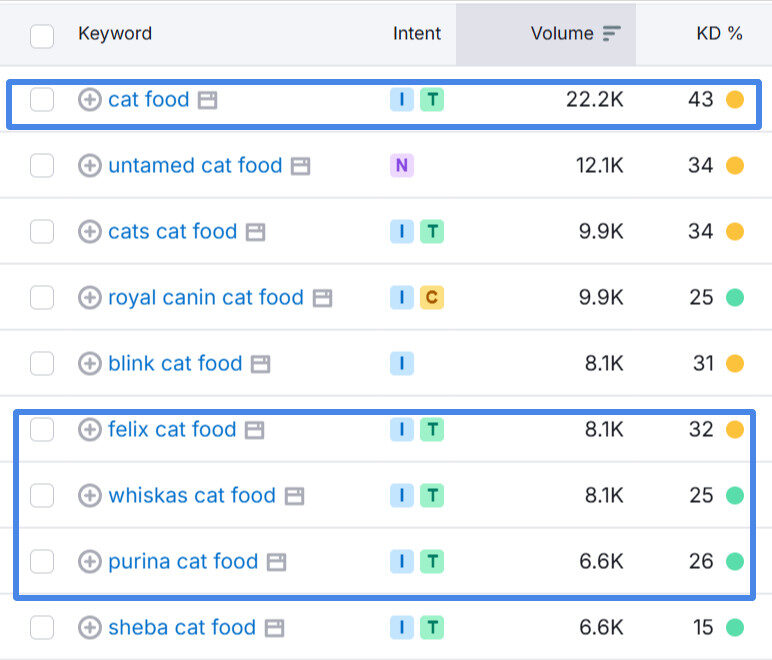
Relevance
As an e-commerce store, you’ll also want to check for keyword relevance. If you’re an online pet store that sells products for cats and dogs, there’s no point adding keywords for rabbit and guinea pig food.
14: Use the SERPS
One of the biggest mistakes we see clients make is focusing solely on keyword research tools without factoring in the SERPs. Google is a goldmine for potential keywords, with the People Also Ask and People Also Search For sections providing inspiration.
As you can see from these examples, a search for cat toys provides some valuable keyword ideas, and you should add them to your Ecommerce SEO strategy.


15: Don’t Forget Search Intent
Having a list of keywords is an excellent first step, but your job isn’t done yet. With Google’s Helpful Content Update, search intent is more important today than ever.
If people click on your web page after performing a search that doesn’t meet their intent, you’ll secure lower ranking positions. There are four types of search intent to be aware of:
- – Informational: When people are searching for answers to a question – e.g.“What’s the difference between the iPad Pro and iPad Air?”
- – Navigational: The searcher is looking for a specific brand or website page – e.g. “Apple iPad Warranty Policy.”
- – Commercial: Users want to compare products or services before making a decision – e.g “iPad Pro vs Microsoft Surface Pro”.
- – Transactional: The searcher is ready to purchase – e.g. “buy iPad Air 256GB”.
On-Page SEO Checklist for Ecommerce Websites
On-page SEO is optimising your website pages to boost organic visibility. However, it can also encourage people to click on your website and turn visitors into buyers. Here’s how to simplify on-page SEO and generate the best possible results.
16: Follow the Correct Heading Structure
Following the correct heading structure lets the search engine crawlers identify and organise your content property. Each product page or blog post should have one H1 tag, which serves as the page’s title.
You can then split different sections into H2s and use H3s to expand on the section.
17: Use Keywords in Your URLs
URLs – universal resource locators – tell search engines about your page. You should always add your main keyword to the URL when possible, and avoid using too many words.
Backlinko found that there’s a strong correlation between short URLs and higher Google rankings.
So it’s a good idea to keep them simple and easy to understand for users and search engine crawlers.
18: Create Title Tags
Title tags require a balance of optimisation and compelling content. After all, your job here is to ensure the search engines rank your website pages and that users click on them.
It’s always a good idea to include your main keyword at the beginning of the title tag, and keep it to under 60 characters.

19: Get Creative With Your Meta Descriptions
Meta descriptions are your opportunity to get creative, as you have more space to encourage users to click. Try to add some target keywords, but avoid stuffing.
Your main goal here is to create a compelling description, but make sure the description doesn’t exceed 155 characters.
20: Implement Schema Markup
Schema markup is code that’s added to a website’s HTML that helps search engines understand its content and context.
There are loads of different types of schema mark-up, such as product and business.
The result of using schema markup is that Google can present information from your webpage more effectively in search results, often through rich snippets like the screenshot below:

Google’s Structured Data Markup Helper is a simple way to implement structured data, but a website developer can also help you.
21: Add Alt Text to Images
Photos of your products can appear in image searches, but the best way to increase their visibility is by using image alt text. Aside from giving each file a relevant name, it’s also important to provide descriptive text explaining the image.
For example, an image of pink Nike Air Max trainers should have alt text like “pink Nike Air Max trainers on a blue background”. If you can add a keyword to your alt text, then it’s a good idea, but providing an accurate description is your main priority here.
Off-Page SEO Checklist for Ecommerce Reputation and Authority
Off-Page SEO is the difference between people recognising and trusting your Ecommerce store, or it going unnoticed. When high authority domains link to your website, it sends trust signals to Google, which results in higher SERP rankings.
22: Create Great Content
We’ll cover this in more detail in the next section, but the better your content is, the more other websites will link to it. Aim to provide informative content that clearly demonstrates your knowledge on a topic.
How-to posts, listicles, and statistics-focused content are excellent ways to encourage backlinks. Creating product demonstration videos, infographics, and user manuals is also a good idea.
23: Monitor Your Competitors
SEO tools like Ahrefs and SEMRush let you spy on your competitors and find out where their links are coming from. By assessing the competition’s backlink profile, you can isolate promising opportunities.
For example, if a competitor is listed in specific directories you haven’t heard of, you can try and add your brand to these websites by contacting the web owner. It’s also a fantastic opportunity to understand why other websites link to the competition and create content offering more value.
24: Digital PR
Journalists need to find reputable sources for stories, and if you’re an expert in your field, they might want information from you.
This can be an effective way of securing some backlinks and setting your brand apart as an authority. Some of the best places to find opportunities include Featured and Qwoted.
Content Marketing Strategy Checklist
Every website – no matter its niche – needs a dedicated content strategy. Ecommerce brands that focus only on product pages miss out on building lasting relationships with their target audience and turning them into loyal customers.
Keyword research will help you to build a content strategy, but you’ll also need to understand your audience’s behaviours, intent, and favourite platforms to discover new brands.
For example, while many people use Google to search for products, YouTube, Reddit, and social media platforms are also popular resources. In fact, YouTube is the second largest search engine, with only Google surpassing it.
25: Create Different Types of Content
Ecommerce stores can create multiple types of content to cater for all preferences. While category and product landing pages are must-haves, blog posts that compare products or provide useful information can appeal to top-of-funnel audiences.
Video content is becoming increasingly popular, and repurposing your blog posts into videos can give them a wider reach.
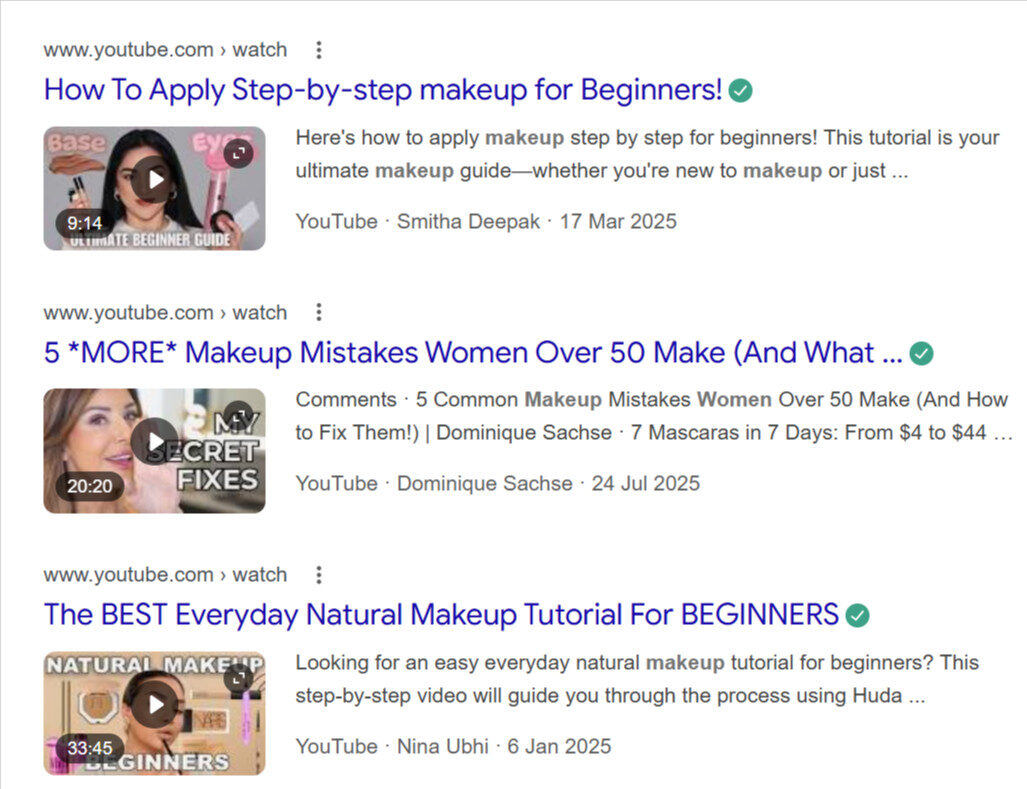
Once you know where your users look for products and the type of content they prefer, you can implement a strategy that delivers maximum visibility.
26: Use Collection Pages
A common challenge all Ecommerce stores face is achieving high rankings for a particular product. In most cases, stores like Amazon, eBay, and Etsy will dominate the SERPs, but you also have to factor in larger brands with a strong reputation.
By leveraging collection pages, you can give your products the best chance of ranking and make them more discoverable to potential customers.
There are many ways to do this, including creating bestseller, seasonal, and occasion category pages, like this example from ASOS:

27: Remove Duplicate Content
Duplicate content occurs when two URLs have similar information, which makes it hard for search engines to decide which page to index and rank.
Ecommerce businesses should try to write unique product descriptions instead of taking them from the manufacturer’s website. In some cases, dynamic pages might show duplicate content, but using canonicals and noindex tags tells Google to ignore them.
Local Ecommerce SEO
Local SEO isn’t just a vital strategy for Ecommerce businesses with a physical store; it also ensures that local audiences can find your products online.
If someone’s searching for refurbished laptops in their area, and you offer UK-wide delivery, you should be optimising your site to appear in these searches.
28: Get A Google Business Profile
Google Business Profile is a valuable tool for Ecommerce brands that want to establish a strong local presence. You can collect reviews through Google Business Profile, and help customers searching for products in the area find your website.
29: Create Location-Focused Landing Pages
Ecommerce stores with physical locations in multiple places should have dedicated pages for each. These pages should contain the store’s address and contact information.
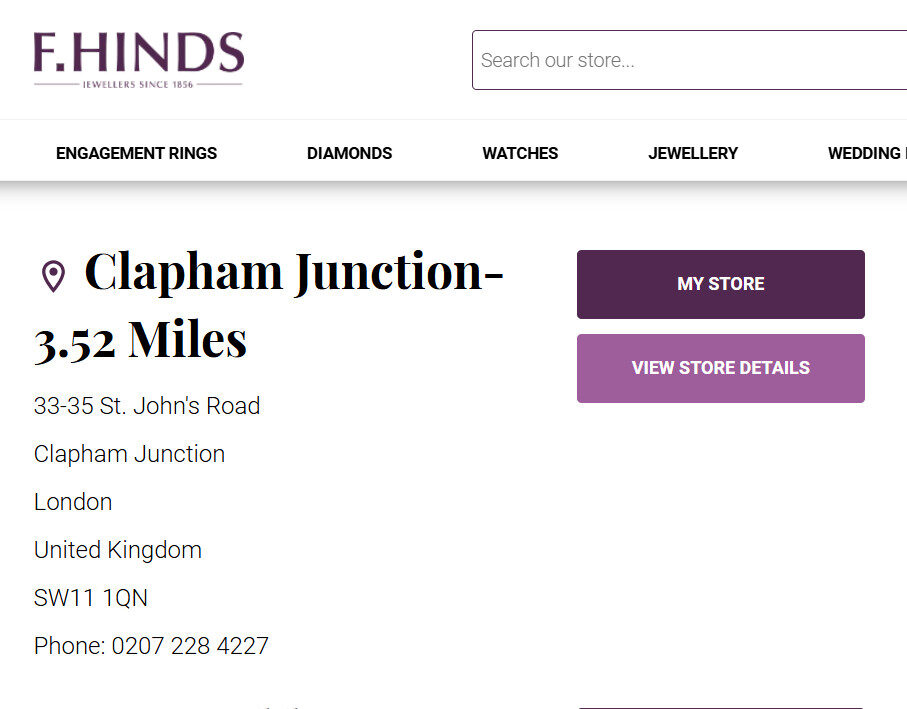
As stated before, even if you only operate online, you can still create location-focused pages.
This is especially important if you’re offering any sort of services in an area but may be based elsewhere.
Key Takeaways For Creating A Seamless Ecommerce SEO Strategy
Get to Grips With AI
Zero-click searches are becoming more common, as Google’s AI overviews now provide instant information. However, AI generates these answers based on other sources, and when you provide high-quality content, you can appear in AIOs.
Implementing structured data markup and assessing which websites appear in AI overviews can help you appear in searches.
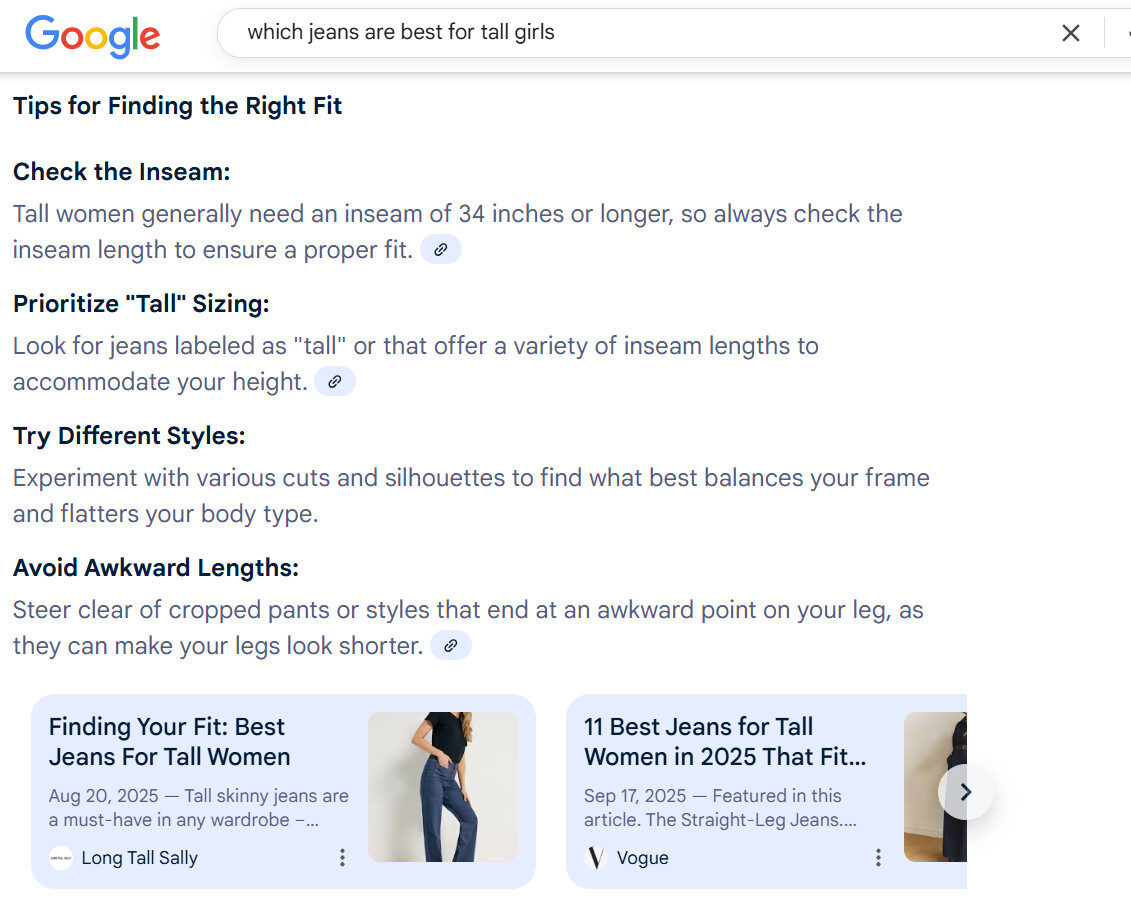
Ask For Reviews
A massive 93% of customers state that online reviews factor into their buying decisions (BusinessDasher). A lack of reviews or negative customer feedback can significantly decrease your chances of attracting new customers and making sales.
Actively ask customers for reviews and always respond to negative feedback, because it shows customers that you care about their experience.
Test and Improve
Use tools like Google Search Console to understand your website’s online visibility and Google Analytics to evaluate how users behave on your website. Heatmaps can also highlight where customers go on your website and pinpoint issues relating to cart abandonment. Tools like Hotjar can help you evaluate user behaviour, and you can then make changes to see whether they result in more sales.
The Bottom Line
Hopefully, our free Ecommerce SEO checklist gives you valuable tips that you can now implement. No matter how much search engines and consumer demands continue to evolve, people will always look for high-quality products at the right price.
When you build an effective SEO strategy, your Ecommerce store can experience lasting growth.
However, the process of optimisation is ongoing and requires an extensive time investment. For this reason, many brands choose to work with an experienced Ecommerce SEO agency. If you’d like to boost your online visibility and turn potential buyers into loyal customers, please contact Converted today for a free quote.



